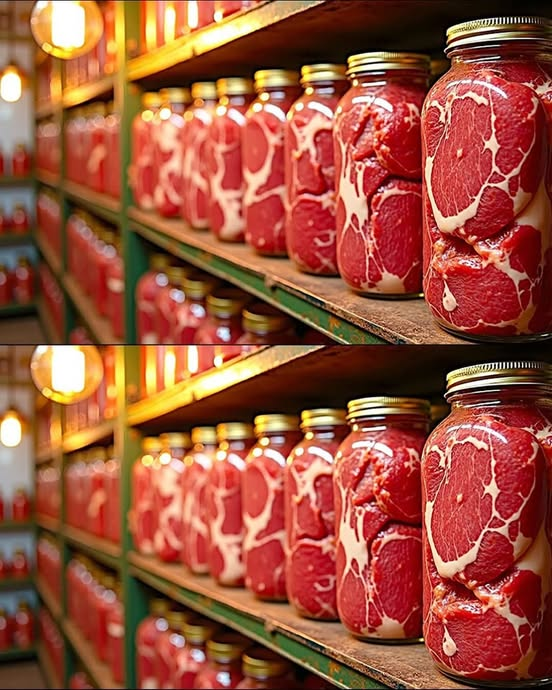The Amish are known for their self-sufficient lifestyle and respect for traditions.
In this article, we’ll explore the meat preservation techniques used by the Amish, their effectiveness, and how they can be applied today for those seeking sustainable, chemical-free alternatives.

1. Traditional Amish Meat Preservation Methods
The Amish have developed various methods of storing and preserving meat that rely on natural ingredients and controlled conditions. Below, we explain the most commonly used ones:
A. Dry curing (Salting and Dehydration)
One of the oldest and most effective methods used by the Amish is dry curing , which involves covering the meat with a mixture of salt and spices to draw out moisture and prevent the growth of bacteria.
Steps in the Amish Dry Curing Process:
- Meat Selection: Generally, high-quality cuts of pork and beef are used.
- Application of salt and spices: The meat is rubbed generously with coarse salt, sometimes combined with sugar, black pepper, garlic and other spices.
- Storage in a cool, dry place: Place in barrels or wooden boxes for several weeks.
- Natural dehydration: Cured meat is left to dry in a well-ventilated area, protecting it from moisture and direct sunlight.
This method is very effective and produces meats such as hams, bacon, and sausages with a firm texture and intense flavor.
B. Natural Smoked
Smoking is another essential technique for preserving Amish meats. This process not only extends the meat’s shelf life but also gives it a distinctive smoky flavor.
Amish Smoking Steps:
- Preparation: The meat is cured with salt before smoking to prevent the growth of bacteria.
- Wood Selection: The Amish prefer hardwoods such as walnut, apple, or oak, as they impart unique flavors.
- Slow smoking: Meat is hung in traditional smokehouses and exposed to smoke for several days or even weeks, depending on the type of meat and the desired level of preservation.
Cold smoking (below 30°C) allows for longer meat shelf life, while hot smoking (above 50°C) partially cooks the meat, reducing storage time.
C. Canned Meat
Since the Amish do not rely on electricity, preserving meat in glass jars is a reliable alternative.
How the Amish Can Meat:
- Cooking the meat: It is cooked beforehand or placed raw in jars.
- Adding liquid: Fill with broth, rendered fat, or salt water to prevent rust.
- Sealing process: The jars are hermetically sealed and sterilized in hot water for several hours.
This method allows meat to be stored for months or even years without refrigeration.
D. Ice Storage and Natural Cellars
Some Amish families use underground cellars and ice houses to keep meat fresh without electric freezers.
- Ice cut from rivers and lakes in winter is stored in pits insulated with straw and sawdust, providing natural cooling throughout the year.
- The earthen cellars maintain cool, constant temperatures, allowing fresh meat to be stored for several weeks without spoiling.
2. Benefits of Amish-Style Meat Preservation
Using these techniques is not only effective, but also offers unique advantages:
Sustainability: They don’t rely on electricity or artificial chemicals.
Authentic flavor: The meat retains a natural, distinctive flavor.
Long-lasting: Some methods allow meat to be stored for months or even years.
Self-sufficiency: They reduce dependence on supermarkets and electric freezers.
3. How to Apply These Techniques Today?
Although we live in a modern world with refrigerators and freezers, many people are adopting these traditional methods for a more self-sufficient and sustainable life. If you’d like to try them, here are some recommendations:
- Start with dry curing or home smoking to preserve meats without refrigeration.
- Experiment with home canning to avoid artificial preservatives.
- If you have access to a basement or cold well, try storing fresh meat naturally.
Conclusion
The Amish community’s meat storage and preservation process is a testament to their wisdom and respect for nature. Through methods such as curing, smoking, canning, and ice storage, they manage to keep meats in excellent condition without relying on modern technology.
If you’re looking for a healthier, more self-sufficient, and sustainable alternative, these techniques may inspire you to change the way you preserve food. Dare to try them and rediscover the traditional art of meat preservation!


